Master AP Calculus AB & BC
Part III. FOUR PRACTICE TESTS
ANSWER SHEET PRACTICE TEST 1
Section I, Part A
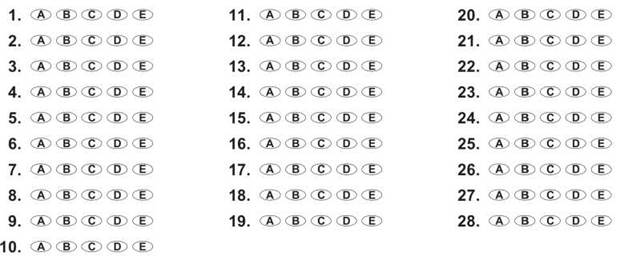
Section I, Part B

Practice Test 1: AP Calculus AB
SECTION I, PART A
55 Minutes • 28 Questions
A CALCULATOR MAY /VO 7 BE USED FO R THIS PART OF THE EXAM I NATO N.
Directions: Solve each of the following problems, using the available space for scratch work. After examining the form of the choices, decide which is the best of the choices given and fill in the corresponding oval on the answer sheet. No credit will be given for anything written in the test book. Do not spend too much time on any one problem.
In this test: Unless otherwise specified, the domain of a function f is assumed to be the set of all real numbers x for which f(x) is a real number.
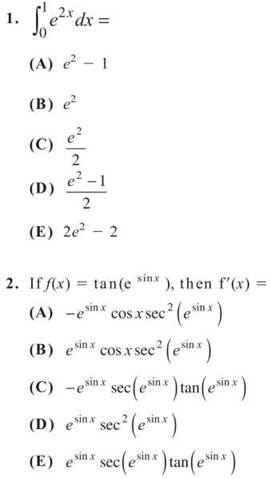
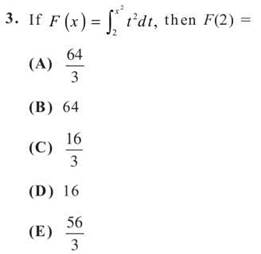
4. If f(x) = tan2x + sin x, then f'(π/4) =

5. At which of the following points is the graph of f(x) = x4 — 2x3 — 2x2 — 7 decreasing and concave down?
(A) (1,-10)
(B) (2,-15)
(C) (3,2)
(D) (-1,-6)
(E) (-2,17)
6. Which of the following are antiderivatives of f(x) = cos3x sinx?
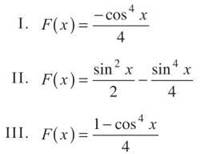
(A) I only
(B) II only
(C) III only
(D) I and III
(E) I, II, and III
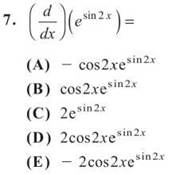
QUESTIONS 8 AND 9 REFER TO THE GRAPH BELOW OF THE VELOCITY OF A MOVING OBJECT AS A FUNCTION OF TIME
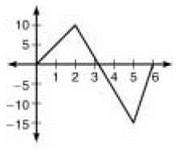
8. At what time has the object reached its maximum speed?
(A) 0
(B) 2
(C) 3
(D) 5
(E) 6
9. Over what interval does the object have the greatest acceleration?
(A) [0,2]
(B) [2,3]
(C) [2,4]
(D) [3,5]
(E) [5,6]
10. An equation of the line tangent to y = sinx + 2cosx at (π/2, 1) is
(A) 2x — y = π — 1
(B) 2x + y = π + 1
(C) 2x — 2y = 2 — π
(D) 4x + 2y = 2 — π
(E) None of the above
11. The graph of the function f is given below.
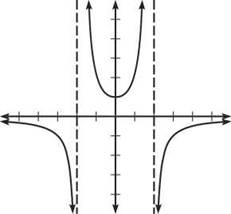
Which of these graphs could be the derivative of f?
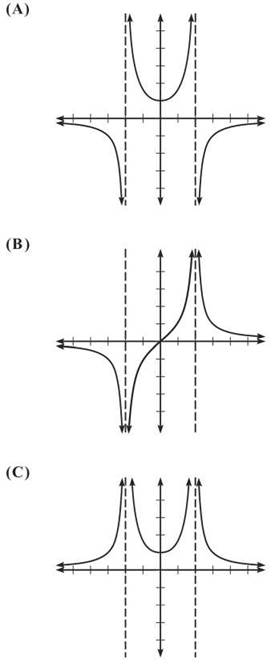
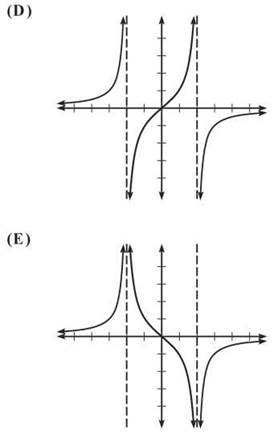
12. The function/is given by f(x) = x4 — 8x3 + 24x2 — 32x + 15.
All of these statements are true EXCEPT
(A) 1 and 3 are zeros of f.
(B) f'(2) = 0.
(C) f"(2) = 0.
(D) (2, — 1) is a point of inflection of f.
(E) (2, — 1) is a local minimum of f.
13. The function f is given by f(x) = 3esinx.
f is decreasing over which interval?
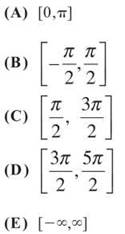
14. Let f and g be twice differentiable functions such that f'(x) ≥ 0 for all x in the domain of f. If h(x) = f(g'(x)) and h'(3) = —2, then at x = 3
(A) h is concave down.
(B) g is decreasing.
(C) f is concave down.
(D) g is concave down.
(E) f is decreasing.
15. In the diagram below, f has a vertical tangent at x = 1 and horizontal tangents at x = 2 and at x = 5. All of these statements are true EXCEPT

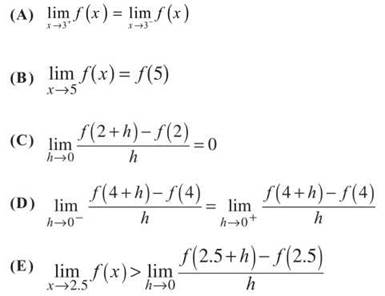
16. What is the area of the region bounded by the curves y = x3 + 1 and y = —x2 from x = 0 to x = 2?

17. Determine dy/dx for the curve defined by x3 + y3 = 3xy.
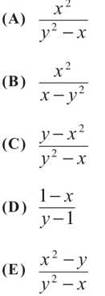
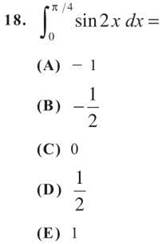
19. The graph of f(x) = (x — 4)3(3x —1l)3 has a local minimum at x =

20. What is the average value of y = sin2x over ![]()

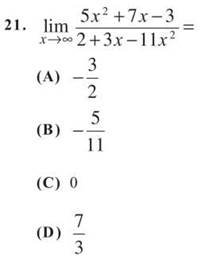
(E) It is nonexistent.
22. The graph of ![]() is concave down over which intervals)?
is concave down over which intervals)?
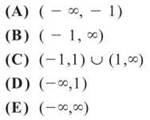
23.
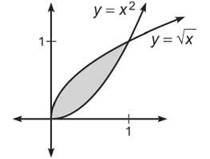
The area of the shaded region in the diagram above is equivalent to
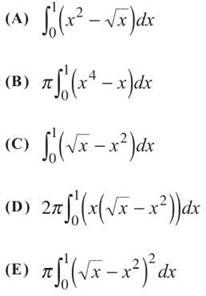
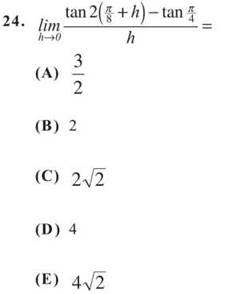
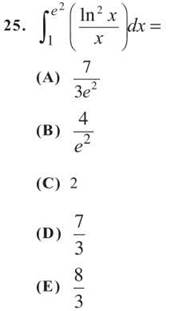
26. Aparticle’s position is given by s(t) = t sint + 2cost + t/π + 2.
The average velocity of the particle over [0,2π] is
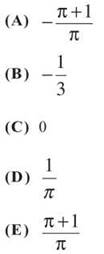
27. If  then
then ![]()
(A) 1/2
(B) ln 2
(C) 2
(D) e2
(E) It is nonexistent.
28.
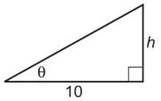
In the triangle shown above, θ is increasing at a constant rate of 15/26 radians per minute.
At what rate is the area of the triangle increasing, in square units per minute, when h is 24 units?

STOP. END OF SECTION I, PART A. IF YOU HAVE ANY TIME LEFT, GO OVER YOUR WORK IN THIS PART ONLY. DO NOT WORK IN ANY OTHER FART OF THE TEST.
SECTION I, PART B
50 Minutes • 17 Questions
A GRAPHING CALCULATOR IS REQUIRED FOR SOME QUESTIONS IN THIS PART OF THE EXAMINATION.
Directions: Solve each of the following problems, using the available space for scratch work. After examining the form of the choices, decide which is the best of the choices given and fill in the corresponding oval on the answer sheet. No credit will be given for anything written in the test book. Do not spend too much time on any one problem.
In this test: (1) The exact numerical value of the correct answer does not always appear among the choices given. When this happens, select from among the choices the number that best approximates the exact numerical value. (2) Unless otherwise specified, the domain of a function/is assumed to be the set of all real numbers x for which f(x) is a real number.
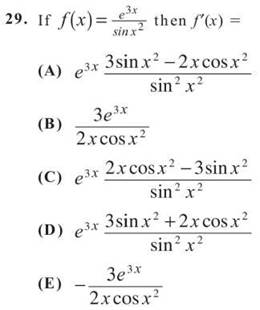
30. Which of the following is an equation for a line tangent to the graph of f(x) = e2x when f’(x) = 10?
(A) y = 10x - 8.05
(B) y = x - 8.05
(C) y = x - 3.05
(D) y = 10x - 11.5
(E) y = 10x - 3.05
31.
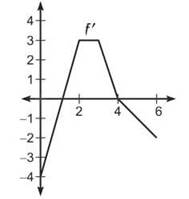
The graph of the derivative of f is shown above.
Which of the following statements is true?
(A) f(0) < f(6) < f(2) < f(4)
(B) f(6) < f(0) < f(2) < f(4)
(C) f(0) < f(2) < f(4) < f(6)
(D) f(2) < f(0) < f(6) < f(4)
(E) f(0) < f(2) < f(6) < f(4)
32. Let f be a function such that ![]() Which of the following must be true?
Which of the following must be true?
I. f(5) = 3
II. f'(5) = 3
III. f is continuous and differentiable at x = 5.
(A) I only
(B) II only
(C) III only
(D) I and II
(E) II and III
33. The function f whose derivative is given by f’(x) = 5x3 — 15x + 7 has a local maximum at x =
(A) -1.930
(B) -1.000
(C) 0.511
(D) 1.000
(E) 1.419
34. Car A is traveling south at 40 mph toward Millville, and Car B is traveling west at 30 mph toward Millville. If both cars began traveling 100 miles outside of Millville at the same time, then at what rate, in mph, is the distance between them decreasing after 90 minutes?
(A) 35.00
(B) 47.79
(C) 50.00
(D) 55.14
(E) 68.01
35. Let  Which of these statements is true?
Which of these statements is true?
I. f is continuous at x = —1.
II. f is differentiable at x = 1.
III. f has a local maximum at x = —1.
(A) I only
(B) II only
(C) III only
(D) I and III
(E) II and III
36. If y = 3x — 7 and x ≥ 0, what is the minimum product of x2y?
(A) -5.646
(B) 0
(C) 1.555
(D) 2.813
(E) 3.841
37. What is the area of the region bounded by y = sinx, ![]() and the y-axis?
and the y-axis?
(A) 0.772
(B) 2.815
(C) 3.926
(D) 5.552
(E) 34.882
38. A region R located in the first quadrant is bounded by the x-axis, y = sinx, and ![]() Determine the volume of the solid formed when R is rotated about the y-axis.
Determine the volume of the solid formed when R is rotated about the y-axis.
(A) 1.130
(B) 2.724
(C) 3.265
(D) 16.875
(E) 17.117
39. Let f be the function given by ![]() For what value of x is the slope of the line tangent to f equal to —1.024?
For what value of x is the slope of the line tangent to f equal to —1.024?
(A) -9.004
(B) -4.732
(C) 1.029
(D) 1.277
(E) 4.797
40.
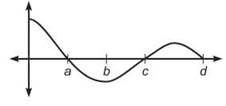
The graph of f is shown above. If ![]() for what value of x does g(x) have a relative minimum?
for what value of x does g(x) have a relative minimum?
(A) a
(B) b
(C) c
(D) d
(E) It cannot be determined from the information given.
41. The graph of the function y = x5 — x2 + sinx changes concavity at x =
(A) 0.324
(B) 0.499
(C) 0.506
(D) 0.611
(E) 0.704
42.
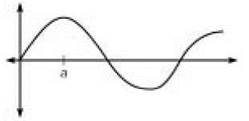
Let ![]() where h is the graph shown above. Which of the following could be the graph of f?
where h is the graph shown above. Which of the following could be the graph of f?
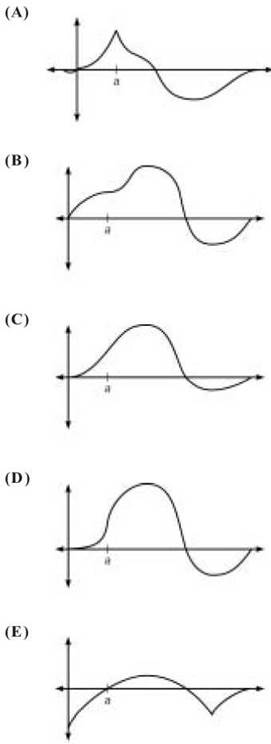
43.
|
x |
0 |
1 |
2 |
3 |
4 |
5 |
6 |
|
f(x) |
1 |
2 |
4 |
1 |
3 |
2 |
5 |
A table of values for a continuous function f is shown above.
If three equal subintervals are used for [0,6], which of the following is equivalent to a right-hand Riemann Sum approximation for ![]()
(A) 14
(B) 17
(C) 20
(D) 24
(E) 27
44.
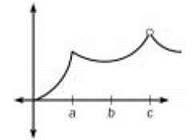
The graph of a function f is shown above. Which of these statements about f is false?
(A) f is continuous but not differentiable at x = a.
(B) 
(C) f(a) is defined, but f(c) is not.
(D) f'(b) = 0.
(E) ![]()
45. Let f be defined as follows:  . Let
. Let ![]() For what value of x ≠ —2 would g(x) = 0?
For what value of x ≠ —2 would g(x) = 0?

STOP. END OF SECTION I, PART B. IF YOU HAVE ANY TIME LEFT, GO OVER YOUR WORK IN THIS PART ONLY. DO NOT WORK IN ANY OTHER FART OF THE TEST.
SECTION II, PART A
45 Minutes • 3 Questions
A GRAPHING CALCULATOR IS REQUIRED FOR SOME PROBLEMS OR PARTS OF PROBLEMS IN THIS PART OF THE EXAMINATION.
SHOW ALL YOUR WORK. It is important to show your setups for these problems because partial credit will be awarded. If you use decimal approximations, they should be accurate to three decimal places.
1. At time t, 0 ≤ t ≤ 10, the velocity of a particle moving along the x-axis is given by the following equation: v(t) = 1 — 4sin(2t) — 7cos t.
(a) Is the particle moving left or right at t = 5 seconds? Explain your reasoning.
(b) What is the average velocity of the particle from t = 0 to t = 10?
(c) What is the average acceleration of the particle from t = 0 to t = 10?
(d) Given that p(t) is the position of the particle at time t and p(0) = 5, find p(2).
2. Let R be the region bound by y = 2x2 — 8x + 11 and y = x2 — 4x + 10.
(a) Sketch the region on the axes provided.
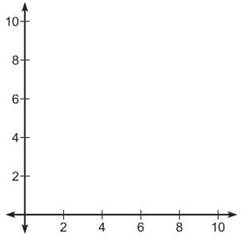
(b) Determine the area of R.
(c) Determine the volume when R is rotated about the y-axis.
(d) The line x = k divides the region R into two regions such that when these two regions are rotated about the y-axis, they generate solids with equal volume. Find the value of k.
3. Water is leaking out of a conical reservoir at a rate proportional to the amount of water in the reservoir; that is, ![]() where y is the amount of water left for any time t. Initially, there were 100 gallons in the reservoir, and after 10 hours, there were 70 gallons.
where y is the amount of water left for any time t. Initially, there were 100 gallons in the reservoir, and after 10 hours, there were 70 gallons.
(a) Write an expression for A(t)—the amount of water in the reservoir for any time t.
(b) How much water would have leaked out after 5 hours?
(c) What is the average amount of water in the reservoir during the first 20 hours?
(d) After how many hours of leaking will the amount from part C be in the reservoir?
STOP. END OF SECTION II, PART A. IF YOU HAVE ANY TIME LEFT, GO OVER YOUR WORK IN THIS PART ONLY. DO NOT WORK IN ANY OTHER FART OF THE TEST.
SECTION II, PART B
45 Minutes • 3 Questions
A CALCULATOR IS NOT PERMITTED IN THIS PART OF THE EXAMINATION.
4. Consider the differential equation ![]() All of the following questions refer to this differential equation.
All of the following questions refer to this differential equation.
(a) Draw the slope field for dy/dx at the indicated points on the below coordinate axis.
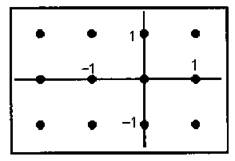
(b) The solution to this differential equation can be classified as which conic section? Justify your answer mathematically.
(c) Find the specific solution to the differential equation, given that it contains the point (2,4).
5. Consider the curve defined by y4 = y2 — x2.
(a) Verify that ![]()
(b) Write the equation for any horizontal tangents of the curve.
(c) Write the equation for any vertical tangents of the curve.
(d) At what ordered pair (x,y) is the line ![]() tangent to the curve y4 = y2 — x2?
tangent to the curve y4 = y2 — x2?
6. The graph of a function f consists of two quarter circles and two line segments, as shown below. Let g be the function given by ![]()
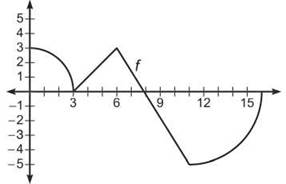
(a) Find g(0) and g(8).
(b) What is the maximum value of g on [3,16]?
(c) Write the equation for the line tangent to g at (11, g(11)).
(d) Find the x-coordinate of any points of inflection of g on [0,16].
STOP. END OF SECTION II, PART B. IF YOU HAVE ANY TIME LEFT, GO OVER YOUR WORK IN THIS PART ONLY. DO NOT WORK IN ANY OTHER PART OF THE TEST.